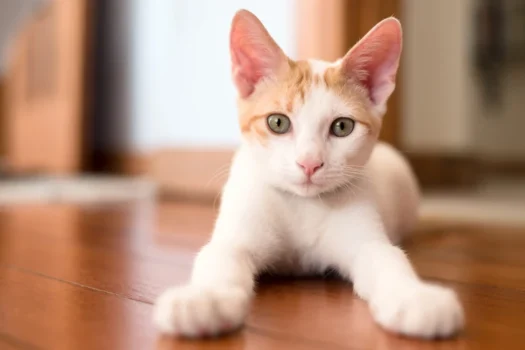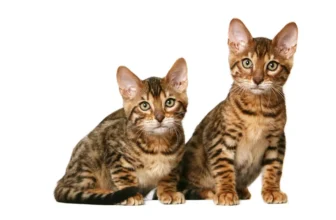Are you a California Spangled cat owner considering whether or not to spay or neuter your pet? While it can be a difficult decision to make, there are many benefits to having your cat undergo the procedure. However, it’s important to know the facts and understand the entire process before making a decision. In this guide, we’ll walk you through everything you need to know about spaying or neutering your California Spangled, including the benefits, when to do it, preparation for surgery, the surgery itself, post-operative care, and frequently asked questions. By the end, you’ll be equipped with all the knowledge you need to make an informed decision for your furry friend.
Benefits of Spaying or Neutering Your Cat
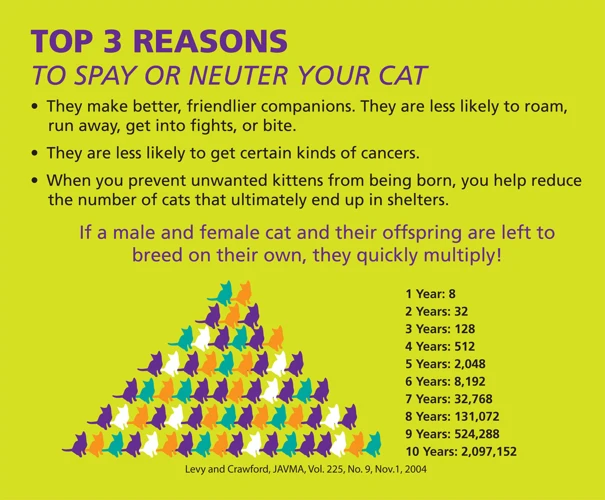
Spaying or neutering your California Spangled can provide an array of benefits that not only benefit your cat but also your household. This simple procedure prevents health issues, reduces behavioral problems, and helps control overpopulation. By spaying or neutering your feline friend, you’re taking an important step towards their long-term health and well-being. Let’s dive deeper into the advantages of spaying or neutering and learn about the positive effects it can have on your precious pet. For additional information on California Spangled cat healthcare, consider checking out some of our other guides, including information on vet check-ups, healthcare plans, and dietary health.
Prevents Health Issues
Spaying or neutering your California Spangled cat not only helps to control the population but also has numerous health benefits. Preventing health issues is one of the most important benefits of spaying or neutering your beloved pet. Below are some of the health benefits that you should keep in mind:
- Reduces the Risk of Certain Cancers: Spaying or neutering your cat reduces the risk of reproductive system cancers such as mammary gland and testicular cancers. Unspayed female cats are more prone to developing mammary gland tumors in their later life, which can be fatal.
- Eliminates the Risk of Uterine and Ovarian Diseases: Spaying your female cat eliminates the chances of developing life-threatening uterine infections, ovarian cysts, and pyometra (a severe infection of the uterus).
- Prevents Urinary Tract Infections (UTIs): Neutering male cats can prevent them from developing UTIs that can lead to bladder infections and other problems.
- Decreases the Risk of Spraying and Marking: Unneutered male cats are likely to mark their territory by spraying urine all over the house, which can cause an unpleasant odor. Neutering your cat can reduce this behavior.
There are many other health benefits of spaying or neutering your California Spangled cat. It is essential to prioritize your pet’s health and take good care of them, which includes regular visits to the vet and providing a balanced diet. If you want to know more about the health of your California Spangled cat, click here for some handy tips on keeping them healthy.
Reduces Behavioral Problems
Spaying or neutering your California Spangled doesn’t just have physical health benefits. It can also have important effects on their behavior. Here are some of the behavioral problems that can be reduced by spaying or neutering your cat:
1. Reduces Aggression: Intact cats (those who have not been spayed or neutered) can display more aggressive behaviors, including biting, scratching, and attacking other animals. The urge to mate can cause these behaviors since intact cats may become territorial or feel threatened by other cats in their environment.
2. Decreases Roaming: Unneutered males may roam far from home in search of mating partners, which increases their risk of getting lost, injured or killed by cars, or getting into fights with other cats. Spaying or neutering reduces the incidence of roaming behavior, thus providing a safer and more controlled environment for your feline friend.
3. Stops Yowling: Unspayed female cats often make loud yowling noises when in heat, which can be distressing to both humans and other cats in the household. Spaying can prevent this behavior from occurring.
4. Helps Prevent Marking: Unneutered male cats may mark their territory or spray urine around the house to let other cats know they are around. This habit usually disappears after they are neutered.
By spaying or neutering your California Spangled, you can help reduce the likelihood of these behavioral problems and promote a happier and healthier lifestyle for your pet.
If you want more information on how to keep your feline friend healthy, you can find useful articles on topics such as vitamins and minerals, diet and health, allergies, dental problems prevention, and sick cat symptoms visit /cali-spangled-cat-diet-health/. Alternatively, you might also be interested in reading about alternative healthcare options for California Spangled cats /alt-healthcare-options-california-spangled-cats/.
Helps Control Overpopulation
Overpopulation of cats is a serious problem in many areas, including California, and is one of the main reasons why spaying or neutering your California Spangled is so important. Cats are known for their ability to reproduce rapidly and frequently throughout the year. As a result, there are often more cats than there are homes for them, which can lead to overcrowded shelters and a high rate of euthanasia for unwanted cats.
According to the American Society for the Prevention of Cruelty to Animals (ASPCA), spaying or neutering your cat is one of the most effective ways to reduce the number of cats in animal shelters and on the streets. By preventing your California Spangled from reproducing, you can help reduce the number of unwanted kittens and cats that end up in animal shelters.
It is important to note that not all cats that reproduce are strays or homeless. Many of them are beloved pets who are allowed to roam freely outdoors, and accidentally become pregnant or impregnate another cat. These litters can be difficult to find homes for and often end up in animal shelters as well. By spaying or neutering your California Spangled, you are doing your part to help prevent overpopulation and the resulting euthanasia of unwanted cats.
In addition to helping control overpopulation, spaying or neutering your California Spangled can also bring many health benefits and behavioral improvements. It is a safe and routine procedure that can be done at most veterinary clinics. However, it is important to follow the proper preparation and post-operative care instructions to ensure a successful outcome for your furry companion.
When to Spay or Neuter Your California Spangled
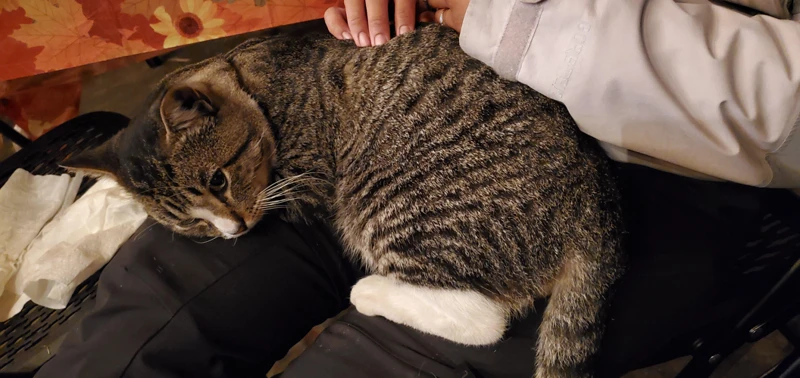
Deciding when to spay or neuter your beloved California Spangled is an important decision that should not be taken lightly. It’s a choice that should be made after considering many factors, such as age, health, and behavior. You want to ensure that your cat is ready for the surgery, but also that you are prepared to take care of them during the healing process. Let’s explore some important considerations when determining when to spay or neuter your California Spangled.
Age and Weight Guidelines
Age and Weight Guidelines:
When it comes to spaying or neutering your California Spangled cat, age and weight are important factors to consider. Generally, it is recommended to spay or neuter your cat at around 6 months of age, before they reach sexual maturity. However, weight can also play a role, as some breeds may mature faster or slower than others.
To help you determine the best time for your California Spangled, the following table provides a breakdown of age and weight guidelines for spaying or neutering:
| Cat Type | Age | Weight |
|---|---|---|
| Male | 5-7 months | 2-3.5 kg |
| Female | 5-7 months | 2-3.5 kg |
It’s important to note that these guidelines may vary based on your cat’s individual health and growth rate. Your veterinarian can help you determine the optimal time for spaying or neutering your California Spangled based on their weight and physical development.
In addition to age and weight, it’s also important to consider other factors such as your cat’s overall health, behavior, and lifestyle when deciding on the best time for the procedure. For example, if your cat is experiencing health issues, your veterinarian may recommend waiting until they are in better condition before undergoing surgery.
By following these age and weight guidelines and consulting with your veterinarian, you can ensure that your California Spangled receives the best possible care and benefits from spaying or neutering.
Other Factors to Consider
When considering spaying or neutering your California Spangled cat, there are several other factors you should take into account besides just age and weight guidelines.
Behavioral Issues: If your cat is displaying aggressive or territorial behavior, spaying or neutering may help alleviate these issues. It is important to consult with your veterinarian or animal behaviorist to determine if this is the appropriate course of action for your cat.
Medical Conditions: If your cat has any pre-existing medical conditions, such as allergies or dental problems, it is crucial to discuss this with your veterinarian prior to scheduling the procedure. In some cases, surgery may need to be postponed or cancelled altogether.
Lifestyle: Consider your lifestyle and future plans when deciding whether to spay or neuter your cat. If you plan on breeding your cat, obviously spaying or neutering is not an option. However, if you lead an active lifestyle and plan on traveling frequently with your cat, spaying or neutering may be a good option for preventing unwanted behavioral issues when traveling.
Financial Considerations: The cost of spaying or neutering your cat can vary depending on your location and veterinarian. It is important to research and budget accordingly. Additionally, post-operative care and follow-up visits may also come with additional costs to consider.
Veterinary Recommendations: Ultimately, the decision to spay or neuter your California Spangled should be made in consultation with your veterinarian. Be sure to ask questions and have a clear understanding of the procedure and any potential risks before making a decision.
If your cat has any pre-existing medical conditions, such as allergies, it is important to take note of this, as some animals may have adverse reactions to anesthesia. Additionally, dental problems can also affect the procedure and healing process, so be sure to maintain good oral hygiene for your cat before and after surgery. If your cat experiences any complications, such as vomiting or lethargy, after the procedure, it is important to contact your veterinarian immediately.
Overall, it’s essential to consider all factors before deciding to spay or neuter your California Spangled cat. Consult with your veterinarian and take into account your cat’s lifestyle, behavioral issues, medical conditions, and any potential financial considerations. By doing so, you can make an informed decision that is best for both you and your feline companion.
Preparation for Surgery
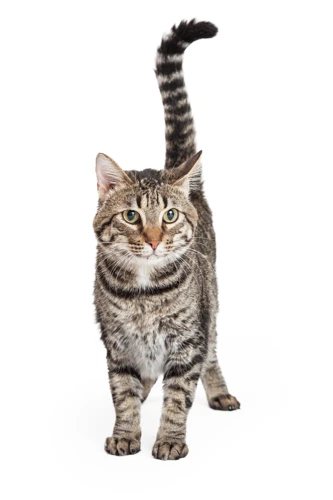
Preparing your California Spangled for surgery can be a stressful experience for both you and your furry friend. However, it is crucial to take the necessary steps to ensure a safe and successful operation. Before the surgery, you will need to schedule a health exam with your vet to assess your cat’s overall health and identify any potential risks. In this section, we will discuss the necessary preparations for spaying or neutering your California Spangled, including health exams, fasting instructions, and anesthesia risks and management. Following these steps will help ensure a smooth and comfortable recovery for your beloved cat. If you’re interested in preventing dental problems in your California Spangled, you may want to check out our article about preventing dental problems in this breed.
Health Exam
Before your California Spangled can undergo spaying or neutering, they will need to undergo a thorough health exam. This exam is designed to make sure your cat is healthy enough to undergo the procedure and to identify any potential health concerns that may require additional attention.
During the health exam, your veterinarian will use a checklist to evaluate your cat’s general health and wellbeing. This checklist may include items such as weight, temperature, pulse, and respiration rate. Additionally, the vet may perform a physical examination of your cat’s skin, ears, eyes, mouth, and other body parts.
If any health issues are identified during the exam, your veterinarian will discuss these concerns with you and provide recommendations for further evaluation or treatment. This may include ordering blood work, diagnostic imaging, or other tests to further evaluate your cat’s health status.
The health exam is an important part of the spaying or neutering process, as it helps to ensure the safety and wellbeing of your cat during and after the procedure. By following your veterinarian’s recommendations for the health exam and any necessary follow-up care, you can help to ensure your California Spangled stays healthy and happy for years to come.
Some common health issues that your vet may be looking for during the examination include:
- Heart problems
- Respiratory issues
- Issues with mobility or arthritis
- Digestive issues
- Urinary tract issues
If any of these issues are identified, your vet may recommend additional testing or treatment prior to spaying or neutering your California Spangled. By addressing these issues before surgery, you can help to minimize the risk of complications and ensure a successful recovery.
If you suspect any health problems with your California Spangled, it’s important to schedule an appointment with your vet right away. By getting timely veterinary care, you can help prevent small issues from becoming bigger problems that require more extensive treatment. For more information on common health issues that can affect California Spangled cats, be sure to visit our article on “Sick California Spangled Cat: What to Expect During a Vet Visit.”
Fasting Instructions
Before any surgery, it is important to ensure your California Spangled is properly prepared. This includes following specific fasting instructions to reduce the risk of complications during the procedure. Not following these instructions could result in anesthesia-related issues such as vomiting or aspiration pneumonia.
Generally, cats should fast for at least 8-12 hours before the surgery. This means no food, treats, or even water during that time. However, it is important to follow the specific instructions given by the veterinarian as they may vary depending on the individual cat and the type of anesthesia used.
The following table provides general guidelines for fasting before surgery:
| Type of Food | Time to Fast |
|---|---|
| Dry Food | 8-12 hours before surgery |
| Wet Food | 12 hours before surgery |
| Treats | 12 hours before surgery |
| Water | 4 hours before surgery |
It is important to note that fasting for too long can also have negative effects on your cat’s health. Be sure to consult with your veterinarian if you have any concerns or specific questions about preparing your California Spangled for surgery.
As a further precaution, it is recommended that you monitor your cat’s behavior and appetite for at least 24 hours after the surgery to ensure there are no issues. If you notice any signs of complications such as lethargy, loss of appetite, or vomiting, contact your veterinarian immediately.
If your cat has any allergies, it is especially important to inform the veterinarian beforehand. You can learn more about California Spangled cat allergies and how to manage them on our website.
Anesthesia Risks and Management
As with any surgical procedure, there are inherent risks involved with administering anesthesia to your California Spangled. However, the benefits of spaying or neutering your cat far outweigh the potential risks when performed by a qualified veterinarian.
Anesthesia management is a critical component of any surgical procedure. Your veterinarian will thoroughly evaluate your cat’s health history, age, weight, and overall physical condition to determine the appropriate type and dosage of anesthesia to be used.
Risks of Anesthesia
While rare, there are several potential risks associated with anesthesia for cats, including:
| Risk | Description |
| Anaphylaxis | A severe allergic reaction to the anesthesia |
| Hypotension | A decrease in blood pressure that can lead to organ failure |
| Bradycardia | A slow heart rate that can cause cardiovascular problems |
| Respiratory Arrest | A temporary cessation of breathing that may result in brain damage or death |
Anesthesia Management
To mitigate these risks, your veterinarian will take several precautions during the anesthesia management process, including:
| Precaution | Description |
| Pre-anesthetic Exam | Thorough physical examination and bloodwork to ensure your cat is healthy enough for surgery |
| Anesthesia Monitoring | Constant monitoring of your cat’s heart rate, blood pressure, oxygen saturation, and respiration during surgery |
| Adjusting Anesthesia Dosage | Alteration of the anesthesia dosage as needed to maintain safe levels throughout the procedure |
| Post-anesthetic Observation | Closely monitoring your cat’s recovery and ensuring they are fully awake and mobile before sending them home |
It’s important to note that while anesthesia risks do exist, they are very low, and most cats recover without incident. If you have any concerns or questions about the anesthesia management process or your cat’s overall health, don’t hesitate to speak with your veterinarian.
Surgery and Post-Operative Care
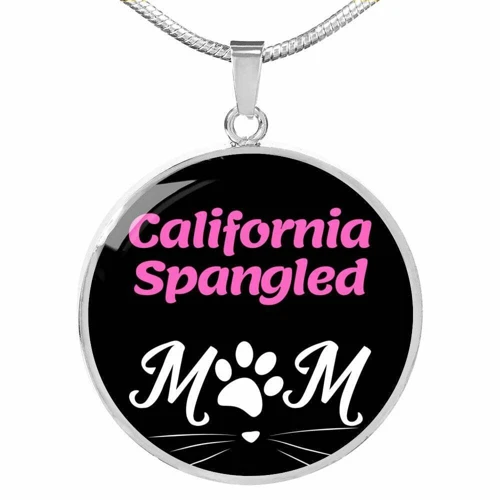
After all the preparations have been made, the actual surgery and post-operative care is the next step in the process of spaying or neutering your California Spangled. This is the most critical stage of the process, as it involves the actual surgical procedure and your cat’s recovery period. It’s important to understand what will happen during the surgery and how you can help your cat heal properly at home. Let’s take a closer look at what you can expect during the surgery and post-operative care.
Procedure Details and Timeframe
During the spay or neuter surgery for your California Spangled, the veterinarian will perform a series of procedures to ensure a safe and successful procedure.
Pre-operative procedures include a thorough physical exam and medical history review. This is important to assess whether your cat has any underlying health issues or sensitivities to anesthesia that could potentially cause complications.
The surgery itself typically takes around 30 minutes to an hour. For a spay, the veterinarian will make a small incision in your cat’s abdomen and remove the ovaries and uterus. For a neuter, the veterinarian will make a small incision in your cat’s scrotum and remove the testicles.
Post-operative procedures will then follow, which include monitoring your cat’s wake-up from anesthesia, providing pain medication, and ensuring that your cat is comfortable during their stay at the veterinary clinic.
The recovery period for a spay or neuter surgery can vary depending on your cat’s age, health, and the specifics of the procedure. In general, cats will require a few days of rest and restricted physical activity to allow the incision site to heal properly. Most cats will be back to their normal routines within a week after surgery.
It’s important to follow your veterinarian’s instructions for post-operative care, which may include providing pain medication, restricting physical activity, and monitoring the incision site for signs of infection or complications. By providing proper care for your California Spangled after their spay or neuter procedure, you can ensure a healthy and successful recovery.
| Procedure Details and Timeframe | Timeframe |
|---|---|
| Pre-operative procedures | Before surgery |
| Surgery | 30 minutes to 1 hour |
| Post-operative procedures | After surgery |
| Recovery period | Varying depending on cat’s age, health, and specifics of procedure |
Healing Process and Physical Activity
After the spaying or neutering procedure, your California Spangled will require some time to heal before returning to normal activities. Here are some important things to keep in mind during your cat’s healing process:
- Rest: Your cat will need to rest in a quiet, comfortable place for a few days after the surgery. Avoid letting your cat jump or play vigorously during this time, as it may cause pain and delay the healing process.
- Pain Management: Pain medications may be prescribed by the veterinarian to manage any pain your cat may experience after surgery. Follow the medication schedule and dosage recommended by the veterinarian.
- Feeding: After the surgery, your cat may not have much of an appetite. Offer small amounts of food and water, but don’t force your cat to eat or drink. If your cat still won’t eat after a day or two, contact your veterinarian.
- Incision Care: Your veterinarian will provide instructions on how to care for the incision site. This will likely include keeping the area clean and dry, monitoring for any signs of infection (such as redness or swelling), and preventing your cat from licking or chewing the area.
- Physical Activity: It’s important to limit your cat’s physical activity during the healing process to prevent injury or complications. Your veterinarian may recommend keeping your cat in a confined space or using an Elizabethan collar to prevent your cat from licking or chewing the incision site.
- Follow-Up Visits: Your veterinarian may schedule follow-up visits to check on your cat’s healing progress. Be sure to attend these appointments and follow any recommended instructions or medication schedules.
Remember, the healing process may take up to several weeks, depending on your cat’s age, health, and other factors. Be patient and follow your veterinarian’s instructions closely to ensure your cat has a successful recovery. If you notice any signs of complications or if your cat’s behavior changes significantly, contact your veterinarian immediately.
Signs of Complications to Watch For
It is important to closely monitor your California Spangled cat during their post-operative recovery period to ensure that they are healing properly and to detect any potential complications. Some common signs of complications to watch for include:
| Complication | Signs to Watch For |
|---|---|
| Infection | Redness, swelling, discharge, or foul odor at the surgical site; fever; loss of appetite; lethargy |
| Bleeding | Bleeding or oozing at the surgical site; pale gums; rapid breathing or heart rate; weakness |
| Reaction to Anesthesia | Vomiting; diarrhea; trembling; difficulty breathing; abnormal behavior or movements; seizures |
| Inflammation or Swelling | Excessive swelling around the surgical site; pain or discomfort; loss of appetite; lethargy |
| Urinary Problems | Difficulty or pain while urinating; frequent urination; blood in urine; reduced appetite or lethargy |
If you notice any of these signs, it is important to contact your veterinarian right away. Swift action can help prevent the complication from becoming worse and causing long-term damage. In some cases, it may be necessary to bring your cat back in for a follow-up exam or additional treatment. By being watchful for potential complications and responding quickly if any arise, you can help ensure your California Spangled cat has a smooth recovery from their spaying or neutering surgery.
Frequently Asked Questions
As a responsible pet owner, it’s natural to have questions about spaying or neutering your California Spangled. To clear up any confusion or concerns you may have, we’ve gathered a few of the most frequently asked questions and provided informative answers below. From cost to personality changes, we’ve got you covered with the information you need to make informed decisions about your cat’s health and well-being. So, let’s dive in and address some common questions you may have.
How Much Does it Cost to Spay or Neuter a Cat?
Spaying or neutering a cat typically requires a one-time payment, but the cost may vary based on different factors. The cost can vary depending on various factors. The average cost for the procedure ranges from $50-$500. The most significant factors affecting the price of spaying or neutering a cat include the location, age, weight, and gender of the cat.
Here are some things to consider when calculating the cost of the procedure:
- Location: Spaying or neutering a cat can cost more or less depending on your location. Prices will be higher in urban areas with higher overhead costs. Similarly, the cost will be lower in rural or suburban areas.
- Age and weight: The cat’s age and weight can also affect the cost. Older cats or cats that are overweight or in heat may need more anesthesia, and the vet may need more time to perform the operation, which can result in a higher cost.
- Gender: The cost of spaying a female cat is typically higher than neutering a male cat due to the fact that the surgery is more complex.
- Additional expenses: Additional expenses such as pre-screening lab tests, post-operative medications, and e-collars to prevent the cat from licking or messing with the surgical area may increase the total cost.
It’s essential to note that some animal shelters, humane societies, and rescue groups may offer discounted prices or even free spaying and neutering services. These organizations are often eager to help pet owners afford the cost of spaying or neutering their pets to help control animal overpopulation and prevent the spread of diseases.
The cost of spaying or neutering your California Spangled is a vital investment in your pet’s health and well-being. The cost may depend on various factors, but it’s essential to do some research and compare prices to ensure you’re getting the best value for your money.
Can My Cat Get Pregnant or Impregnate After Being Spayed or Neutered?
After spaying or neutering your California Spangled, they cannot get pregnant or impregnate other cats. Spaying is the process of removing a female cat’s reproductive organs, while neutering is the process of removing a male cat’s testicles.
Female cats:
- Spaying prevents cats from going into heat, which reduces the chance of them mating with a male cat and getting pregnant.
- After spaying, the ovaries and uterus are removed, making it impossible for the cat to conceive or carry kittens.
- It’s important to note that if a female cat is already pregnant when spayed, the surgery will not terminate the pregnancy. The veterinarian will discuss alternative options with the owner.
Male cats:
- Neutering eliminates a male cat’s ability to fertilize a female cat’s eggs.
- The surgery removes the testicles, which eliminates the production of sperm.
- It’s important to note that even after neutering, male cats can still display sexual behaviors, such as mounting and catcalling. However, these behaviors are not related to reproduction and should subside over time.
It’s important to spay or neuter your California Spangled to avoid overpopulation and prevent certain health and behavioral issues. By removing the reproductive organs, the cat’s chances of developing certain types of cancers are also reduced. Spaying or neutering is a safe and responsible choice for pet owners to make.
Does Spaying or Neutering Change My Cat’s Personality?
One common misconception about spaying or neutering cats is that it will change their personalities. However, this is usually not the case. Spaying or neutering can actually lead to positive changes in behavior and temperament. Here are some details to keep in mind:
- Decrease in Aggression: Spaying or neutering can help reduce the amount of aggression in cats, making them calmer and more affectionate.
- Decrease in Roaming: Unneutered male cats have a strong instinct to roam in search of a mate, which can lead to destructive behavior and even danger. Neutering can significantly decrease this urge to roam.
- Decrease in Marking: Both male and female cats can engage in urine marking to claim territory, and this behavior can be reduced or eliminated by spaying or neutering.
- No Change in Playfulness or Intelligence: Spaying or neutering will not affect a cat’s playful or intelligent behavior. In fact, many cats become even more playful and energetic after the procedure due to a decrease in anxiety and stress.
It’s important to note that every cat is unique, and there may be some individual differences in how spaying or neutering affects their behavior. However, in general, the procedure will not drastically change a cat’s personality, and it can lead to a happier, healthier, and more well-behaved pet.
Conclusion
In conclusion, spaying or neutering your California Spangled is a crucial decision that can greatly benefit both your pet and the community. By reducing health issues and behavioral problems, as well as helping control overpopulation, spaying or neutering can provide a longer, healthier life for your cat and make a positive impact on the environment.
When considering spaying or neutering, it’s important to consult with a veterinarian to determine the best age and weight for your cat, as well as any other factors to consider. Proper preparation for surgery, including a health exam and following fasting instructions, can help ensure a safe and successful procedure.
Although there are risks associated with anesthesia, appropriate management can minimize these risks. Additionally, post-operative care and monitoring can help facilitate the healing process and prevent complications.
As with any medical decision, there may be questions or concerns about the cost, potential for future pregnancies, or changes in personality. However, consulting with a veterinarian and doing research can provide answers and peace of mind.
Overall, spaying or neutering your California Spangled can provide numerous benefits and is a responsible decision for both you and your pet. Consider the information discussed in this article and take steps towards providing a healthier and happier life for your feline friend.
Frequently Asked Questions
How long does it take for a California Spangled to recover from spaying or neutering surgery?
Most cats fully recover from spaying or neutering within 10-14 days. However, individual recovery times may vary depending on the cat’s age and overall health.
Is it better to spay or neuter my California Spangled?
Both spaying and neutering are equally beneficial for your cat’s health and behavior. The decision between the two ultimately depends on your personal preference and your cat’s individual needs.
Can spaying or neutering my California Spangled cause weight gain?
It is possible for cats to gain weight after being spayed or neutered. However, proper diet and exercise can help prevent excessive weight gain and keep your cat at a healthy weight.
What are the potential risks of spaying or neutering surgery?
Although spaying or neutering is a common surgical procedure, there are some risks involved. These can include bleeding, infection, and adverse reactions to anesthesia. However, the benefits of the surgery typically outweigh the risks.
How long should I wait to feed my California Spangled after surgery?
Your veterinarian may recommend fasting your cat for several hours prior to surgery and for a few hours after surgery. After this period, you can gradually introduce small amounts of food and water.
What age does my California Spangled need to be before I can spay or neuter them?
Most veterinarians recommend spaying or neutering cats between the ages of 4 and 6 months. However, some may recommend waiting until the cat is a bit older or has reached a certain weight.
Will spaying or neutering my California Spangled affect their behavior?
Spaying or neutering can help reduce undesirable behaviors in cats, such as spraying, aggression, and roaming. However, it may not completely eliminate these behaviors and may take several weeks for noticeable changes to occur.
How can I care for my California Spangled after spaying or neutering surgery?
After surgery, it’s important to keep your cat calm and inactive for a few days to promote healing. Monitor their incision site for any signs of infection and follow any post-operative care instructions provided by your veterinarian.
What are some signs of complications after spaying or neutering surgery?
Signs of complications can include excessive bleeding, swelling, discharge from the incision site, and loss of appetite. If you notice any of these symptoms, contact your veterinarian immediately.
What are the potential long-term health benefits of spaying or neutering my California Spangled?
Spaying or neutering your cat can reduce their risk of certain health issues, such as uterine infections, ovarian cancer, and testicular cancer. It may also increase their lifespan and improve their overall health and well-being.

